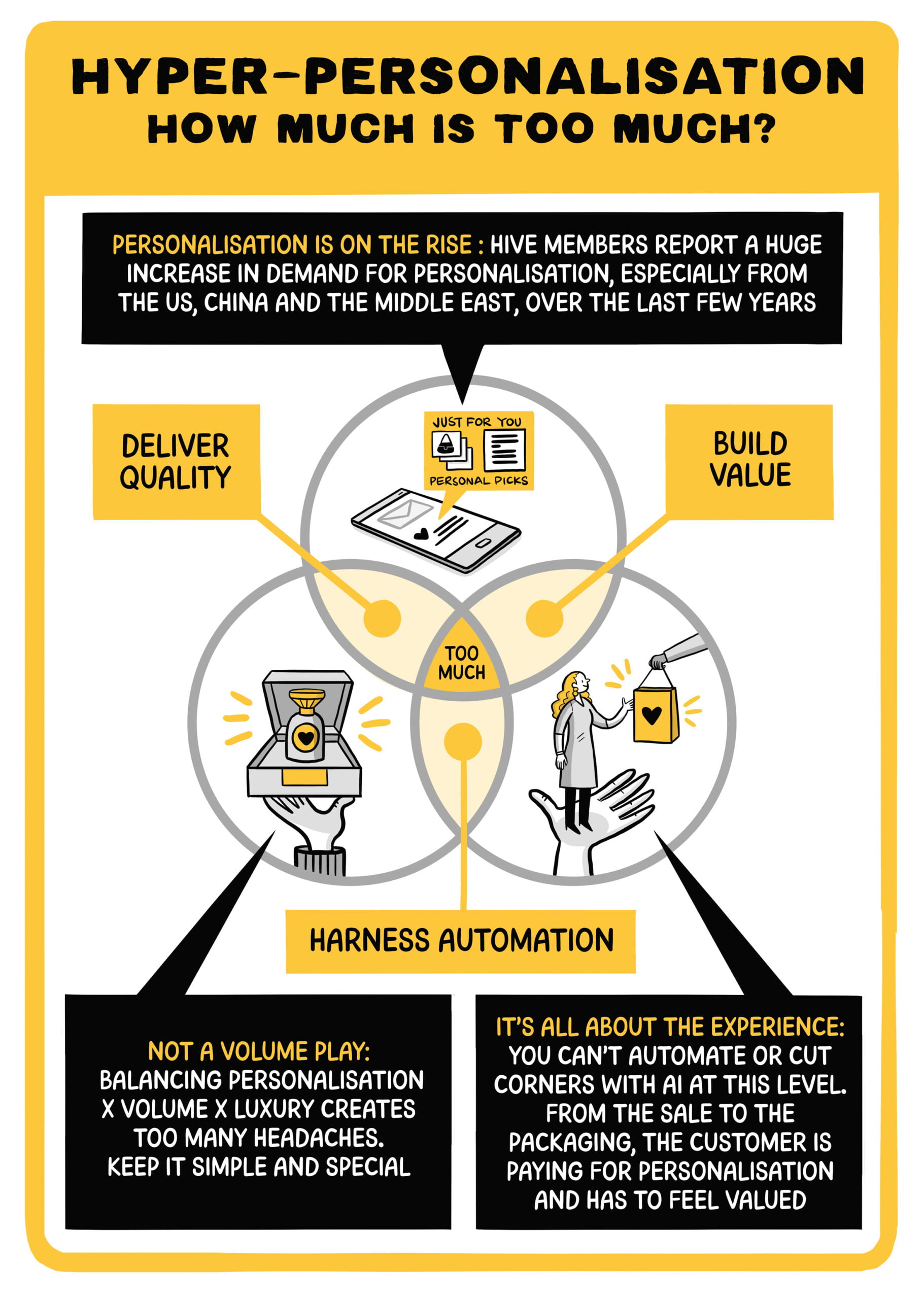From the details such as lead times and product issues, to the big picture questions around whether ‘one of one’ is the ultimate luxury. Marrying the tension between personalisation, volume, margins and customer experience is something luxury brands are struggling to align. The trend is growing worldwide, but is gaining momentum faster in China, the US and the Middle East
In a nutshell…
- The more you spend, the more personalisation customers expect
- Packaging is key. Provide a premium customer experience
- One-off hyper-bespoking has strong Asia, US and ME demand (and is growing)
- Different brand approach and AI will not work for luxury
- Concierge services can provide a luxury delivery experience
- Personalisation is needed and can help elevate a brand, but you need strategy and thought as to how to implement globally
- When looking at personalisation in relation to products, this has drastically increased in the last two years
- Is there a space for a virtual version of your store?
A closer look…
Hyper-personalisation in action

Hyper-personalisation spans the luxury spectrum, from toys to cars. But no matter what product customers are personalising, some experiences are universal. Many brands acknowledge that the margin on personalised products is lower, complexity is higher, and that offering personalisation is often a loyalty and retention play than a commercial priority.
For businesses with a strong gifting offering, balancing the needs of bespoke and volume can be very difficult. The need to keep brand equity high means quality control must be stringent, but equally customers are reluctant to accept longer lead times for their purchases.
There are still questions around the buying experience and packaging. Meeting customer expectations around unboxing experiences, and replicating in-person customer service levels online and by courrier can be challenging. Much of the difference is driven by pricing: the more you pay, the more you expect. While offering AI and digital shopping experiences is generally found to be below expectations currently, there is a place for AI to support fit and visualisation, as well as using digital interaction with skilled team members to support the sales and after-sales processes. For delivery, we’re seeing a rise in concierge services to create a bespoke feel and limit returns.
Still to do…
Luxury personalisation comes with challenges and the margin is often the main problem retailers face. For many businesses, offering personalisation is as much about customer relationships and retention as it is about product sales.
For those offering personalisation on a larger scale, issues with automation and testing can be thrown up. Dealing with peak demand, determining when best to cut off sales, and determining the right product ranges for personalisation were all raised as challenges for retailers. Filtering inappropriate messages, and offering emoticons and international characters can throw up problems which are best dealt with before checkout is complete, but testing can be harder due to the smaller scale. Likewise, having a senior and competent team throughout the personalised process who can catch issues early can be critical for maintaining quality and brand equity.
Providing customers with choice, but not too much choice is also important. For bigger ticket purchases, supporting customer choice is important, but too many options can become confusing and create the danger that they will abandon their shopping journey, particularly online. Guiding the customer through their journey is more important for personalised products at every level.



